Can we still avert irreversible ice sheet melt?
Earlier this week, I was able to follow up my last talk with Professor Stefan Rahmstorf from the Potsdam Institute for Climate Impact Research (PIK), after he returned from the Paris climate science forum. After the publication of the study he was involved in on paleoclimatic data linking global temperature with sea level rise, and having heard his views on the science consensus ahead of the December UN summit in Paris, I wanted to know how he views the prospects for the polar ice sheets.
A question I return to often is whether anything we do to reduce emissions from now onwards – given that huge damage has already been done by our fossil fuel emissions and that the CO2 will remain in the atmosphere for a very long time to come – can prevent the ice sheets in the Antarctic and Greenland from reaching a “tipping point”.
Professor Rahmstorf gives this definition of a “tipping point” – which can mean different things to different people in different contexts:
“Climate tipping points are points of no return, where you cannot stop a process that has been set in motion. It’s a bit analogous to the situation where you are sitting in a rowing boat and you lean over a bit to one aside and not much happens. Then you lean a bit more and a tipping point comes where the boat simply tips over. One of these points of no return is with our continental ice sheets, where their further melt-down becomes inevitable and unstoppable. And we have to realize that we have enough continental ice on this planet to raise global sea level by more than 60 metres. That means we cannot afford to lose even a very small fraction of that ice without drowning coastal cities and small island nations.”
Is the boat still afloat?
But, of course, we are already losing ice at a worrying rate. Rahmstorf cites recent research showing that at least a part of the West Antarctic ice sheet has already been destabilized.
“We probably have already crossed the tipping point for a part of West Antarctica. That is probably going to already commit us to about three metres of sea level rise.”
Of course this is not likely to happen in the very near future. But the problem with the tipping points is, of course, that there is no going back, as Rahmstorf explains:
“Sea level has already risen 20 centimetres globally since the late 19th century, due to modern global warming, which is very basic physics. It’s melting continental ice sheets. And also the oceans are being heated up, which expands the ocean water, because warm water takes up more space. And by the year 2100, with unmitigated emissions, we are looking at one meter of sea level rise, which already, for vulnerable coastal areas like delta regions, like Bangladesh for example, will dramatically increase the storm surge risk. But sea level rise will not stop in the year 2100, because the ice sheets are actually quite slow to melt, and within the next decades, we will be causing a long-term sea level rise commitment by several metres for every degree of global warming that we cause.”
Greenland – and Miami, St. Petersburg, Bangladesh…
Record melting appears to be happening on Greenland at the moment. I asked Rahmstorf how safe the world’s biggest island and the largest area of freshwater ice in the northern hemisphere (See also the Ice Island in Pictures) is from reaching a point of no return. He wasn’t able to give a reassuring answer:
“We don’t know exactly where the tipping point is for the Greenland ice shield is. The IPPC estimates anywhere between one and four degrees of global warming. We are already at one degree warming, so we may well cross that tipping point in the next decades.
In the review of the relation between global temperature and sea level rise from polar ice disintegration I discussed in the last blog post, Rahmstorf and his colleagues found that just a slight further rise in temperature might equate to a rise in global sea level of up to six metres. I asked him what that would mean for the world right now:
“There would be quite a number of large coastal cities I cannot imagine could still be defended. Think of New York city for example. Or Miami would be one of the first cities to go. St. Petersburg, Alexandria, Manila – you name them. Once you are talking about metres of sea-level rise, the consequences would be quite catastrophic. Especially as it is to be feared that people will not react proactively by move away from the danger zone, but will probably stay in their cities until a major storm surge hits. Like Hurricane Katrina hitting New Orleans, which also was a case where experts had warned for a long time that the city was in danger, once the next hurricane strikes, but people still didn’t act according to the precautionary principle. As they should have, and as we must do to prevent a climatic disaster in future.”
Can we keep the ice chilled?
So what would we have to do to keep sea level in check?
“Emissions would have to be close to zero by mid-century, so we are not talking about small cosmetic adjustments, but a transformation of our energy system, decarbonization, that is getting out of the carbon-based energy system. The good news is that the technologies to do that are available. It’s all about mustering the political will. And, of course, fighting the particular interests which are opposing this transformation.”
Stefen Rahmstorf is not one of those scientists who prefer to sit on the fence and leave the interpretation of his research and their implications up to the politicians. He is convinced only rapid action to stop emissions can prevent catastrophic climate change – including the melt of the polar ice.
I have interviewed him on previous occasions in the last few years. This time, I was surprised by his optimistic stance on whether the international community can still do anything in time to stop global warming from reaching the dangerous level of two degrees (or even one point five, as Rahmstorf and others say would be far preferable):
“There’s still a good chance that a strong agreement coming out of the Paris summit in December could mean we could avoid the Greenland tipping point. I am cautiously optimistic that Paris will reach a meaningful agreement, not necessarily one that guarantees that we will stay below two degrees global warming, but one that will be seen in hindsight as a real turning point, from where emissions started to fall soon after. The key point is – the sooner we stop global warming, the better the chances are that we avoid future critical tipping points.”
All we need, says Rahmstorf, is the political will to make use of the technologies available, take on the fossil fuels lobby, and clean up our energy system.
Listen to my interview with Stefan Rahmstorf on DW’s Living Planet this week.
Polar ice set for six-metre sea level rise?
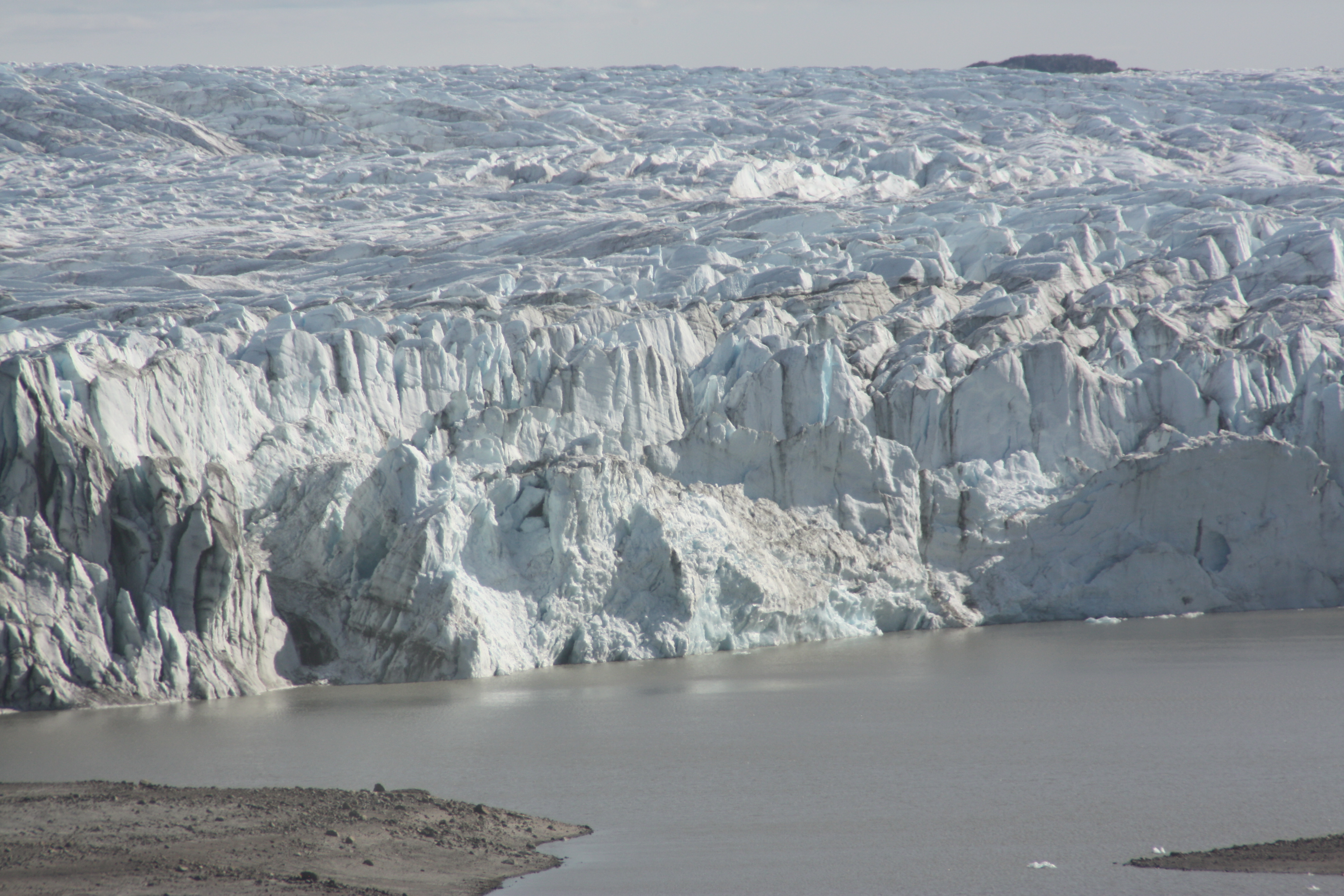
Small increases in global average temperature may eventually lead to sea level rise of six metres or more, according to evidence from past warm periods in Earth’s history.
That was the worrying message from a paper published in the journal Science this week. The researchers, part of the international “Past Global Changes” project, analysed sea levels during several warm periods in Earth’s recent history, when global average temperatures were similar to today or slightly warmer – around 1°C above pre-industrial temperatures.
I was able to talk briefly to one of the authors, Stefan Rahmstorf from the Potsdam Institute for Climate Impact Research (PIK), who was in Paris at the international scientific conference “Our common future under climate change” this week. (The article I wrote on that event, billed as the biggest climate science gathering ahead of the key COP in Paris in December, and the full interview with Rahmstorf are online now).
Rahmstorf described the new study on polar ice sheet disintegration and sea level as “a review of our state of knowledge about past changes in sea level in earth’s history, especially looking at all the data we have on past warm periods, due to the natural cycles of climate – the ice age cycles – that come from the earth’s orbit.”
He went on: ”We have had warmer times in the past, the last one was about 120,000 years ago, and we find that invariably, during these warmer times, the sea level was much higher. It was at least about six meters higher than today, even though temperatures were only a little bit higher, maybe one to three degrees warmer – depending on what period you are looking at – compared to the pre-industrial climate.”
Bad news for coastal dwellers
Not happy reading for anyone living close to the coast, if you look at temperature development today:
“Basically the message is: the kind of climate we are moving towards now – even if we limit warming to two degrees – has in the past always been associated with a sea level several metres higher, which would of course have catastrophic consequences for many coastal cities and small island nations.”
With warming currently on course to reach four degrees and more by the end of this century if greenhouse gas emissions continue on their present trajectory, this message adds yet another piece of evidence to motivate the world’s governments to come up with a new World Climate Agreement at the UN Paris summit at the end of the year – and to get moving towards a zero-carbon economy asap.
The interdisciplinary team of scientists concluded that during the last interglacial warm period between ice ages 125,000 years ago, the global average temperature was similar to the present, and this was linked to a sea-level rise of 6 to 9 metres, caused by melting ice in Greenland and Antarctica. Around 400,000 years ago, when global average temperatures were estimated to be between 1 to 2 degrees Celsius higher than –pre-industrial levels, sea level reached 6 to 13 meters higher. The lead author of the study, Andrea Dutton from the University of Florida, told journalists global average temperatures were similar to today during these recent interglacial periods, but polar temperatures were slightly higher. However, she stressed: “The poles are on course to experience similar temperatures in the coming decades”.
The Arctic is currently warming faster than the global average. IPCC estimates indicate that it could be almost two degrees warmer by 2100 compared with the temperature from 1986 to 2005 – IF the two-degree target is adhered to. Otherwise, it could rise by as much as 7.5°C.
Speed of sea level rise hard to predict
The authors of the study stress that the further back you go (they tried to estimate sea level as long as three million years ago), the more difficult it gets to calculate precisely how high sea level was, given that geological forces push and pull the Earth’s surface and can also cause vertical movement measuring tens of metres. This makes it hard to separate the geological changes in shoreline position from sea level rise caused by polar ice sheet disintegration.
Still, the authors point out that small temperature rises of between one and three degrees were, in the past, like today, linked with magnified temperature increases in the polar regions, which lasted over many thousands of years.
They conclude that even keeping to the overall two-degree warming limit is no guarantee: “Even this level sustained over a long period of time carries substantial risk of unmanageable sea level rise, not least because carbon dioxide remains in the atmosphere for over a thousand years”.
The researchers are not able to say how fast sea levels rose in the past, which would be a key piece of information for planning adaptation. Further research will be necessary for that.
Co-author Anders Carlson of Oregon State University says by confirming that our present climate is warming to a level associated with significant polar ice-sheet loss in the past, the study us providing “perhaps the most societally relevant information the paleo record can provide”.
Carlson heads the PALSEA2 Working Group, hosted by the Past Global Changes (PAGES) project, which used computer models and evidence from around the globe to come up with the conclusions in the study.
Stefan Rahmstorf draws a clear conclusion from the results of this research and other recent studies on instabilities in the Antarctic ice sheet and changes in ocean currents:
“This really calls for limiting warming to 1.5 degrees. And it is still feasible to limit warming to 1.5 degrees. But that requires a much stronger political will than we currently have”.
Still, the Potsdam professor is more optimistic than he used to be that advances in renewable energy and other technologies and growing awareness of the negative impacts climate change is already having around the globe could mean the UN Paris conference at the end of the year will mark a turning point.
Not that he thinks Paris can “do it all”. As you’ll see if you read my interview with him, he is hoping for the start of a process similar to the Montreal Protocol, where the original agreement was not too strong, but worked eventually by toughening up as it went along. Now that would be really good news. He told me it was time to “turn the tide of rising emissions”. Here’s hoping it happens in time to keep the sea level around the world well below that six metres that were there in the past.
Icy hotspots in focus at climate talks?
With western Europe sweltering in a record-breaking heatwave, climate scientists are meeting in Paris this week for what is regarded as the last major climate science conference before the key COP 21 in Paris at the end of this year. “Our Common Future under Climate Change” wants to be “solutions-focused”, but starts off with a resumé of the state of science as a basis.
One of the topics on the wide agenda is, of course, the cryosphere, with scientists reporting on rapid changes in the Arctic ice and permafrost, and worrying developments in the Antarctic.
As conference after conference works to prepare a new World Climate Agreement, to take effect in 2020, the International Cryosphere Climate Initiative (ICCI) is concerned that the INDCSs, or Intended Nationally Determined Contributions, i.e. the climate action countries propose to take are not in line with keeping global warming to the internationally set target of a maximum two degrees centigrade. Scientists tell us this itself would already have major impacts on the world’s ice and snow.
Climate pledges way too low
Pam Pearson, the founder and director of ICCI, told journalists during a recent visit to Bonn her indication of INDCS so far was that they are ”somewhere between 3.8 and 4.2 degrees”.
Pearson and her colleagues are working hard to make the scientific evidence on climate changes in our ice and snow regions accessible and “must-reads” for the politicians and others who are preparing to negotiate the new agreement at the Paris talks at the end of the year, to replace the Kyoto protocol. She was here in Bonn at the last round of UN preparatory climate talks last month, holding a side event and briefing media and negotiators.
Pearson was part of the original Kyoto Protocol negotiating team. She is a former U.S. diplomat with 20 years’ experience of working on global issues, including climate change. She says she resigned in 2006 in protest over changes to U.S. development policies, especially related to environmental and global issues programmes. From 2007-2009, she worked from Sweden with a variety of organizations and Arctic governments to bring attention to the potential benefit of reductions in short-lived climate forcers to the Arctic climate, culminating in Arctic Council ministerial-level action in the Tromsø Declaration of 2009.
Pearson founded ICCI immediately after COP 15 to bring greater attention and policy focus to the “rapid and markedly similar changes occurring to cryosphere regions throughout the globe”, and their importance for the global climate system.
IPCC reports already out of date
At the briefing in Bonn a couple of weeks ago, she said:
“Certainly through AR5, (the 5th Assessment Report of the IPCC) the science is available to feed into the negotiations. But I think what we see as a cryosphere organization, participating as civil society in the negotiations – and I think also, very importantly, what the IPCC scientists see – is a lack of understanding of the urgency of slowing down these processes and the fact that they are irreversible. This is not like air or water pollution, where if you clean it up it will go back to the way it was before. It cannot go back to the way it was before and I think that is the most important aspect that still has not made its way into the negotiations”.
Scientists taking part in the event organized by the ICCI in Bonn stressed that a lot of major developments relating especially to Antarctica and to permafrost in the northern hemisphere was not available in time for that IPCC report. This means the scientific basis of AR5 is already way out of date, and that it does not include very recent important occurrences.
Sea ice in decline
Dirk Notz from the Max Planck Institute for Meteorology in Hamburg heads a research group focusing on sea ice and rapid changes in the Arctic and Antarctic.
He told journalists in Bonn: “Over the last 10 years or so we’ve roughly seen a fifty percent loss of Arctic sea ice area, so this ice is currently retreating very, very rapidly. In the Antarctic, some people are talking about the increase of sea ice. Just to put things into perspective: there is a slight increase, but it’s nothing compared to the very rapid loss that we’ve seen in the Arctic.“
The slight increase in sea ice in the Antarctic is certainly not an indicator that could disprove climate warming, as some of a skeptical persuasion would like to have us believe.
“In the Antarctic, the changes in sea ice are locally very different. We have an increase in some areas and a decrease in other areas. This increase in one area of the southern ocean is largely driven by changes in the surface pressure field. So the winds are blowing stronger off shore in the Antarctic, pushing the ice out onto the ocean, and this is why we have more sea ice now than we used to have in the past. Our understanding currently says that these changes in the wind field are currently driven by anthropogenic changes of the climate system,“ said Notz.
He stresses that as far as the Arctic is concerned, the loss of sea ice is very clearly linked to the increase in CO2. The more CO2 we have in the atmosphere, the less sea ice we have in the Arctic.
Changing the face of the planet
Notz stresses the speed with which humankind is currently changing the face of the earth:
“Currently in the Arctic, a complete landscape is disappearing. It’s a landscape that has been around for thousands of years, and it’s a landscape our generation is currently removing from the planet, possibly for a very long time. I think culturally, that’s a very big change we are seeing.”
At the same time, he says the decline in the Arctic sea ice could be seen as a very clear warning sign:
“Temperature evolution of the planet for the past 50 thousand years or so shows that for the past 10 thousand years or so, climate on the planet has been extremely stable. And the loss of sea ice in the Arctic might be an indication that we are ending this period of a very stable climate in the Arctic just now. This might be the very first, very clear sign of a very clear change in the climatic conditions, like nothing we’ve seen in the past 10,000 years since we’ve had our cultures as humans.”
Simulations indicate that Arctic summer sea ice might be gone by the middle of this century. But Notz stresses that we can still influence this:
“The future sea ice loss both in the Arctic and the Antarctic depends on future CO2 emissions. A rapid loss of Arctic summer sea ice in this decade is possible but unlikely. Only a very rapid reduction of CO2 might allow for the survival of Arctic summer sea ice beyond this century.”
Antarctic ice not eternal
Whereas until very recently, the Antarctic ice was regarded as safe from climate warming, research in the last few years has indicated that even in that area, some possibly irreversible processes are underway. This relates to land ice rather than sea ice.
Ricarda Winckelmann is a scientist with the Potsdam Institute for Climate Impact research (PIK). She told journalists and climate negotiators at the Bonn talks that Antarctica could be regarded as the “sea level giant”. The global sea level would rise by five metres if West Antarctica’s ice sheet melted completely, 50 metres for the East Antarctic ice sheet.
“Over the past years, a couple of regions in Antarctica have really caught our attention. There are four hotspots. They have all changed rapidly. There have been a number of dynamic changes in these regions, but they all have something in common, and that is that they bear the possibility of a dynamic instability. Some of them have actually crossed that threshold, some of them might cross it in the near future. But they all underlie the same mechanism. That is called the marine ice sheet instability. It’s based on the fact that the bottom topography has a certain shape, and it’s a purely mechanical, self-enforcing mechanism. So it’s sort of driving itself. If you have a retreat of a certain region that undergoes this mechanism, it means you cannot stop it. “
The hotspots she refers to are the Amundsen Basin in West Antarctica, comprising the Pine Island and Thwaites glaciers, which are the fastest glaciers in Antarctica:
“It has been shown in a number of studies last year that it actually has tipped. Meaning it has crossed that threshold, and is now undergoing irreversible change. So all of these glaciers will drain into the ocean and we will lose a volume that is equivalent to about a metre of global sea level. The question is how fast this is going to happen.”
Next comes the Antarctic peninsula, where very recent research has indicated that warm water is reaching the ice shelves, leading to melting and dynamic thinning.
Even in East Antarctica, which was long considered virtually immune to climate change, Winckelmann and her colleagues have found signs that this same mechanism might be at work, for instance with Totten Glacier:
“There is a very recent publication from this year, showing that (…) this could possibly undergo the same instability mechanism. Totten glacier currently has the largest thinning rate in East Antarctica. And it contains as much volume as the entire West Antarctic ice sheet put together. So it’s 3.5 metres worth of global sea level rise, if this region tips”, says the Potsdam expert.
Pulling the plug?
The other problematic area is the Wilkes Basin.
“We found that there is something called an ice plug, and if you pull it, you trigger this instability mechanism, and lose the entire drainage basin. What’s really striking is that this ice plug is comparably small, with a sea-level equivalent of less than 80 mm. But if you lose that ice plug, you will get self-sustained sea level rise over a long period of time, of three to four metres.“
This research is all so new that it was not included in the last IPCC assessment:
“We’ve known that this dynamic mechanism exists for a long time, it was first proposed in the 1970s. But the observation that something like this is actually happening right now is new,” Winckelmann stresses.
Clearly, this is key information when it comes to bringing home the urgent need for rapid climate action.
Pam Pearson stresses that these changes in themselves have a feedback effect, and have an impact on the climate:
“The cryosphere is changing a lot more quickly than other parts of the world. The main focus for Paris is that these regions are moving from showing climate change, being indicators of climate change, to beginning to drive climate change, and the risks of those dynamics beginning to overwhelm anthropogenic impacts on these particular areas is growing as the amount of carbon dioxide in the atmosphere goes up, as the temperature rises.”
Clilmate factor permafrost
This applies in particular to the effect of thawing permafrost. Susan Natali from the US Woods Hole Research Centre is co-author of a landmark study published in Nature in April. She also joined the ICCI event in Bonn:
“Carbon has been accumulating in permafrost for tens of thousands of years. The amount of carbon currently stored in permafrost is about twice as much as in the atmosphere. So our current estimate is 1500 billion tons of carbon permanently frozen and locked away in permafrost. So you can imagine, as that permafrost thaws and even a portion of that gets released into the atmosphere, that this may lead to a significant increase in global greenhouse gas emissions.”
The study was conducted by an international permafrost network. “The goal is to put our current understanding of the processes in permafrost regions into global climate models. The current IPCC reports don’t include greenhouse gas emissions as a result of permafrost thaw”, says Natali.
Permafrost regions make up some 25% of the northern hemisphere land area. The scientists say between 30 and 70 percent of it could be lost by 2100, depending on the amount of temperature rise. There is still a lot of uncertainty over how much carbon could be released, but Winckelmann and her colleagues think thawing permafrost could release as much carbon into the atmosphere by 2100 as the USA, the world’s second biggest emitter, is currently emitting.
The time for action is now
“The thing to keep in mind is that the action we take now in terms of our fossil fuel emissions is going to have a significant impact on how much permafrost is lost and in turn how much carbon is released from permafrost. There is some uncertainty, but we know permafrost carbon losses will be substantial, they will be irreversible on a human-relevant time frame, and these emissions of ghgs from permafrost need to be accounted for if we want to meet our global emissions targets”, says Winckelmann.
The challenge is to convince politicians today to act now, in the interests of the future. Pam Pearson and her colleagues are working to have a synthesis of what scientists have found to date accessible to and understandable for the negotiators who will be at COP21 in Paris in December.
In terms of an outcome, she says first of all we need higher ambition now, in the pledges being made by different countries. The lower the temperature rise, the less the risk of further dynamic change processes being set off in the cryosphere. The other key factor is to make sure there is flexibility to up the targets on a regular basis, without being tied to a long negotiating process. The current agreement draft envisages five year reviews.
“There are a number of cryosphere scientists who actually expect these kinds of signals from cryosphere to multiply, and that there may be some dramatic developments just over the next three to five years, that may finally spur some action”, Pearson says.
Here’s hoping the UN negotiators will not wait for further catastrophic evidence before committing to an effective new climate treaty at the end of this year.
Further reading from my coverage:
Civil Society heats up climate debate
Thicker Antarctic ice – good for the climate?
Antarctic melt could raise sea levels faster
West Antarctic ice sheet collapse unstoppable?
Climate change risk to icy East Antarctica
Ice paradoxes from pole to pole
Returning after a longish break with little access to news and data, there are several ice and snow stories jumping out of my mailbox at me. I’ve picked out two which those of a skeptical persuasion might say disprove some key climate assumptions, but which actually, in fact, confirm some trends and predictions.
Worrying, but not unexpected, are the latest measurements of the extent of the Arctic sea ice. In February, the experts at the National Snow and Ice Data Center (NSIDC) based in Boulder, Colorado, noted a record for the lowest observed maximum sea ice extent. Although it seems the sea ice did grow at some points during March, the overall for the month was the lowest recorded since satellite measurements began in 1979. The average extent for the month was 14.39 million square km – some 1.13 million square km below the 1981-2010 long-term average. The previous March low of 14.45 million square km was recorded in 2006.
In the Arctic Journal, Kevin McGwin quotes Andy Mahoney, a geophycisist with the Sea Ice Group at the University of Alaska Fairbanks, as saying the irregular pattern, with a kind of “double dip”, with the ice decreasing, increasing, then decreasing again, is “a pretty unusual event, regardless of the reason”. Normally, the ice levels would increase to the seasonal maximum first in March, then decline.
One reason, Mahoney says, could be the wind blowing ice into the regions where ice growth was observed, according to the NDSIC the Bering Sea, Davis Strait and around Labrador.
No contradiction to climate warming theory
The NSDIC says warm conditions in the Bering Sea and the Russian Sea of Okhotsk contributed to the record low winter ice maximum.
The overall downward trajectory, however, is clear. The brief increase in March is not a sign that the sea ice is recovering. Mahoney told the Arctic Journal parts of Alaska had seen abnormally high temperatures this winter, which was in line with the overall seasonal ice observations.
“What drives the maximum extent is what happens at the margins, and they can grow and retreat due to short-term variants. The conditions in the central Arctic, far from the action, are indicative of the warm year we’ve had in Alaska,” he said. Barrow, on Alaska’s northern coast, far away from the southern margin, for example, saw a lot of broken ice this winter, according to Maloney.
WWF expressed concerned about the latest figures:
“This is not a record to be proud of. Low sea ice can create a series of reactions that further threaten the Arctic and the rest of the globe,” said Alexander Shestakov, Director, WWF Global Arctic Programme.
“This chilling news from the Arctic should be a wakeup call for all of us,” said Samantha Smith, the leader of WWF’s Global Climate and Energy Initiative. She stresses the need to cut global emissions to halt the Arctic melt.
The proportion of thick Arctic ice that lasts multiple years has dwindled over the past two decades. A recent study shows that Arctic sea ice has thinned by 65 per cent since 1975, leaving ice that is more susceptible to melting.
Writing for Alaska Dispatch News (AND), Yereth Rosen notes that the most dramatic changes in the Arctic sea ice extent have been in the melt season, not in the period of maximum winter coverage. He quotes NSIDC scientist Julienne Strove, who led a study published last year in Geophysical Research Letters which showed the open-water season is lengthening, mostly because of extended melt in summer and autumn. So is this additional winter record a sign of more melting to come? Only time will tell, but the signs are not looking good.
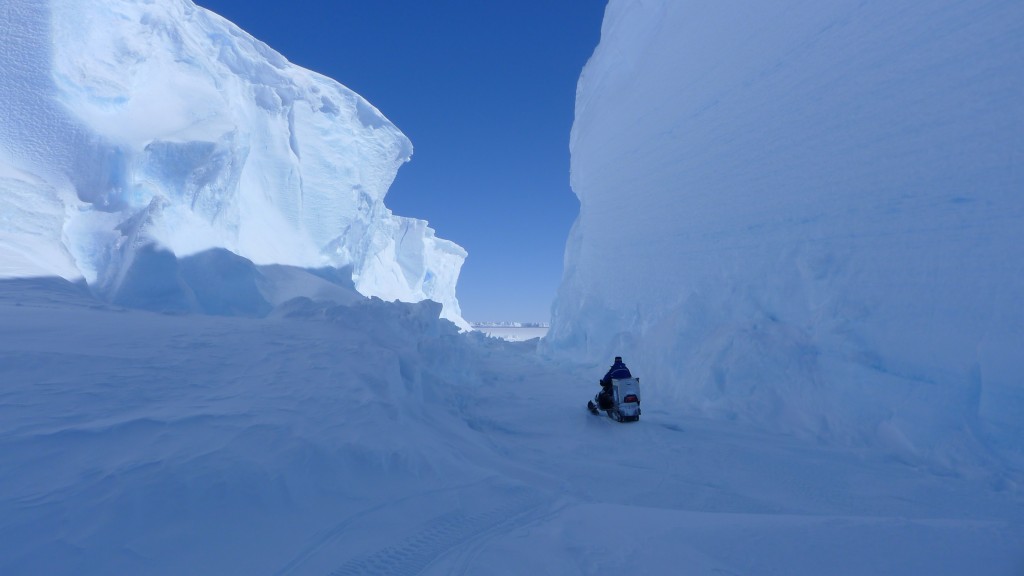
Warmer temperatures, more snow? Belgian International Polar Foundation shot of director and explorer Alain Hubert in the Antarctic.
A story from the opposite pole has also attracted attention. It says climate change is actually increasing the amount of snow in the Antarctic. Puzzling? Not necessarily.
More heat, more snow?
An international study headed by Germany’s Potsdam Institute for Climate Impact research (PIK) comes to the conclusion that every degree of regional warming could increase snowfall there by around five percent. The estimate is based on ice cores and climate modeling.
The information adds a new element to calculations of how much the Antarctic will contribute to global sea level rise. Some people might assume more snow would stop the Antarctic from losing mass. In fact the increasing weight of new snow and ice can make it slide towards the coast and into the ocean faster. In this connection, you might like to read some more stories on these Antarctic issues:
Thicker-ice-in-the-antarctic-good-news-for-the-climate?
Antarctic melt could raise sea levels faster
West Antarctic ice sheet collapse unstoppable
Anders Levermann, one of the new study authors, whom I have spoken to several times on the effects of climate change on the Antarctic and global sea levels, says the latest results back up earlier conclusions that the Antarctic will lose more ice than it will gain and thus have a major influence on global sea level. Levermann, from PIK, is also one of the lead authors of the sea-level chapter of the IPCC report. He stresses that the latest study just provides yet another piece of the “jigsaw puzzle” coming together on how global sea level is likely to develop in the future.
If the world leaders called on to come up with a new world climate agreement at the end of this year need any more motivation, this scientific research from both ends of the world should really give them an extra push.
Thick Antarctic ice not sign of cooling
The recent publication of a study on Arctic ice as measured by the “yellow submarine”, an underwater robot, caused a flurry of comments on the “climate hoax” by some of those of a “climate-sceptical” persuasion. I contacted a sea ice physicist at Germany’s AWI Institute for an independent opinion. Here’s the background:
Measurements conducted by an underwater robot have found that Antarctic sea ice is much thicker than previously thought in some places. Much of this floating sea ice is underwater, hidden from the satellites which have been tracking seasonal sea ice for decades. The satellite data is normally validated by drilling into ice floes which can be reached by ship, or visual estimates from the ships themselves. However, it is difficult to reach the thickest ice that way.
Underwater robot below the ice
Over the last four years, an international group of researchers has been mapping the bottom of sea ice in several areas of the Antarctic using an underwater robot, or AUV. It can swim to a depth of some 30 metres (100 feet) and uses sonar directed upwards to survey the bottom of the sea ice. This gave them access to areas where measurements could not be carried out until now.
The study, published in the journal Nature Geoscience, suggests that the average ice thickness could be considerably higher than previous estimates. In three regions surveyed, the robot sub found that deformed, thickened ice accounted for at least half of and as much as 76 percent of the total ice volume, the researchers say.
Climate skepticism vindicated?
While Antarctica’s ice sheet, that is the land ice, is melting and retreating, the extent of the sea ice has been expanding over the last three winters. This has led some who are skeptical about climate change to suggest that it could be evidence that human-made global warming is not happening. But sea-ice physicist Stefan Hendricks, from the Alfred-Wegener Institute for Polar and Marine Research, based in Bremerhaven, Germany, told me in an interview the new measurements were no reason to doubt climate change is happening.
“What our colleagues have shown is that ship-based measurements do not record this really thick ice. That is no surprise to us. It is good that they have found this out, but basically it just tells us that we have to be cautious when it comes to using ship-based data”, Hendricks said.
The sea ice extent in the Antarctic has been growing, while the sea ice in the Arctic, at the northern end of the planet, has decreased dramatically in recent years. Hendricks stresses that the two regions are completely different:
“The Arctic Ocean is surrounded by land, whereas in the Antarctic, the land is in the middle. If the Arctic were not surrounded by land, the ice cover would also be much bigger in winter”, says Hendricks. The increase in Antarctic sea ice in winter can be partly explained by the wind direction, he adds . Ice grows faster, the thinner it is. If it is blown out from shore, for instance into the Indian Ocean, new ice is created very quickly, according to the ice expert. He also warns against comparing what happens to the Arctic in summer to what happens at the southern end of the planet in winter:
“If you look at the cycle over the whole year, your will see that the sea ice in the Antarctic also melts almost completely in summer”.
Valuable data, limited application
Still, the German expert says the new ice measurements from the Antarctic are of major importance to our understanding of how sea ice behaves. But he stresses that the ice floes are on the move all the time. Although the measurements are very exact, the situation is constantly changing ,and the measurements could only be taken at a limited number of spots in what is a huge area of ice.
“The question is how representative is this for the total ice extent? This depends to a very large extent on which ice floe you take. There are large differences between them. The differences are particularly marked if you go further away from land. Close to land, the ice piles up and is deformed and so you get this very thick ice. Further out, you don’t get that”.
The new measurements certainly do not give any reason to be more relaxed about climate warming, says Hendricks. Increased sea ice could have a cooling effect, as ice reflects heat back into space, whereas the sea water absorbs the heat, exacerbating warming. But given that the ice melts again in summer, that effect would be very slight, says the physicist.



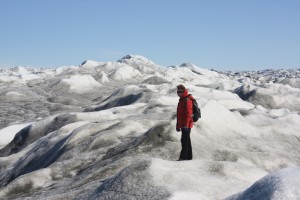
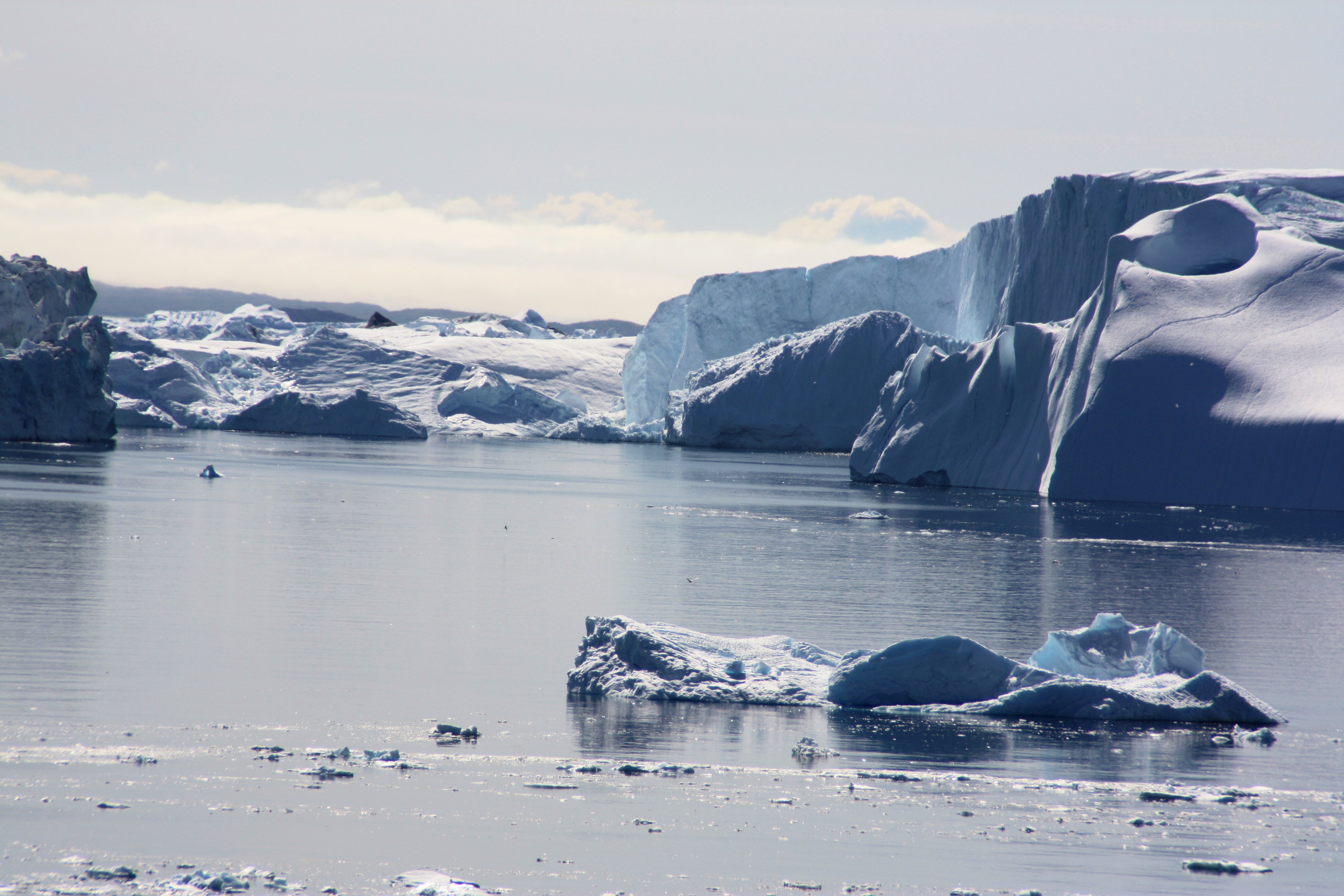
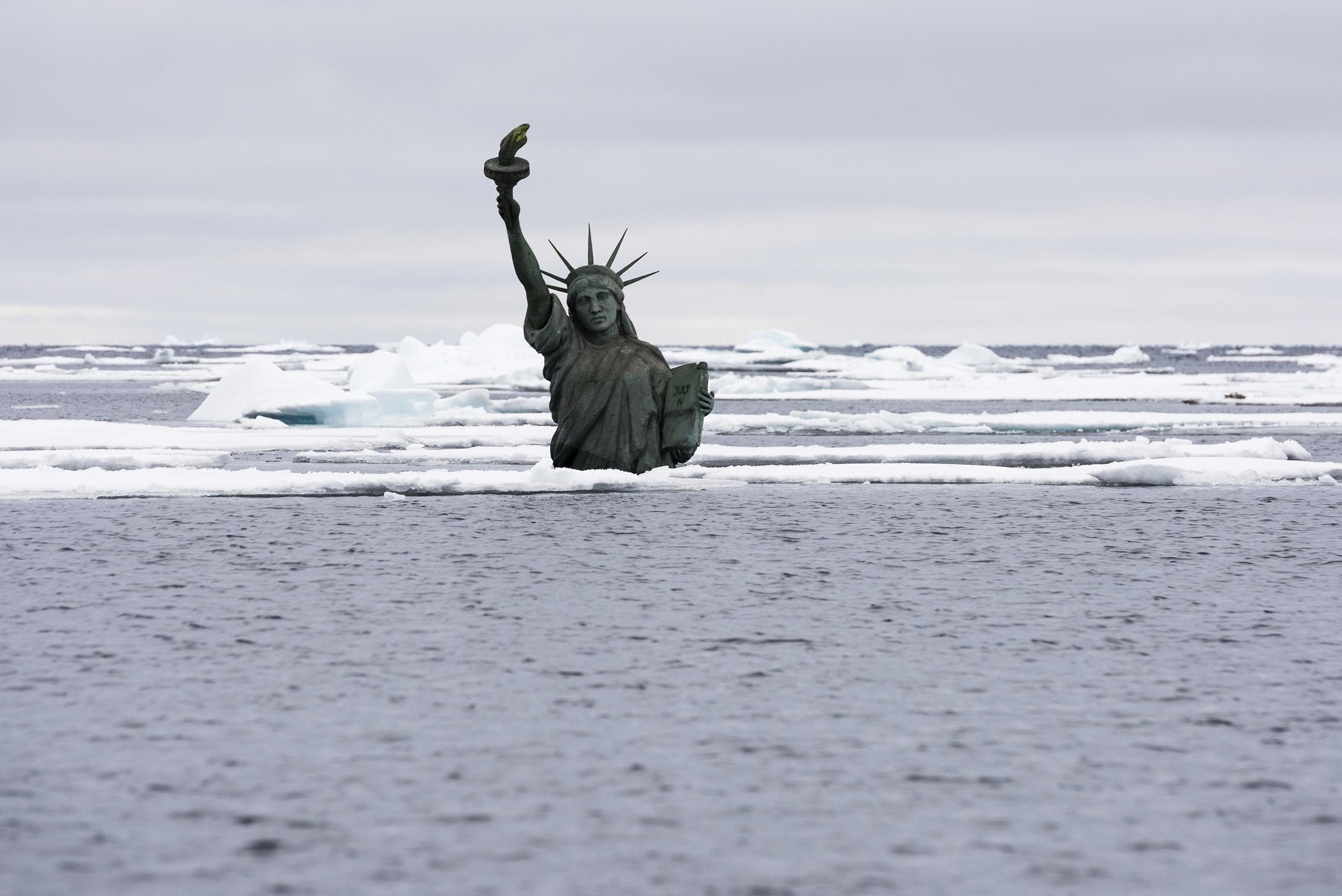

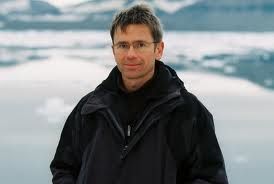
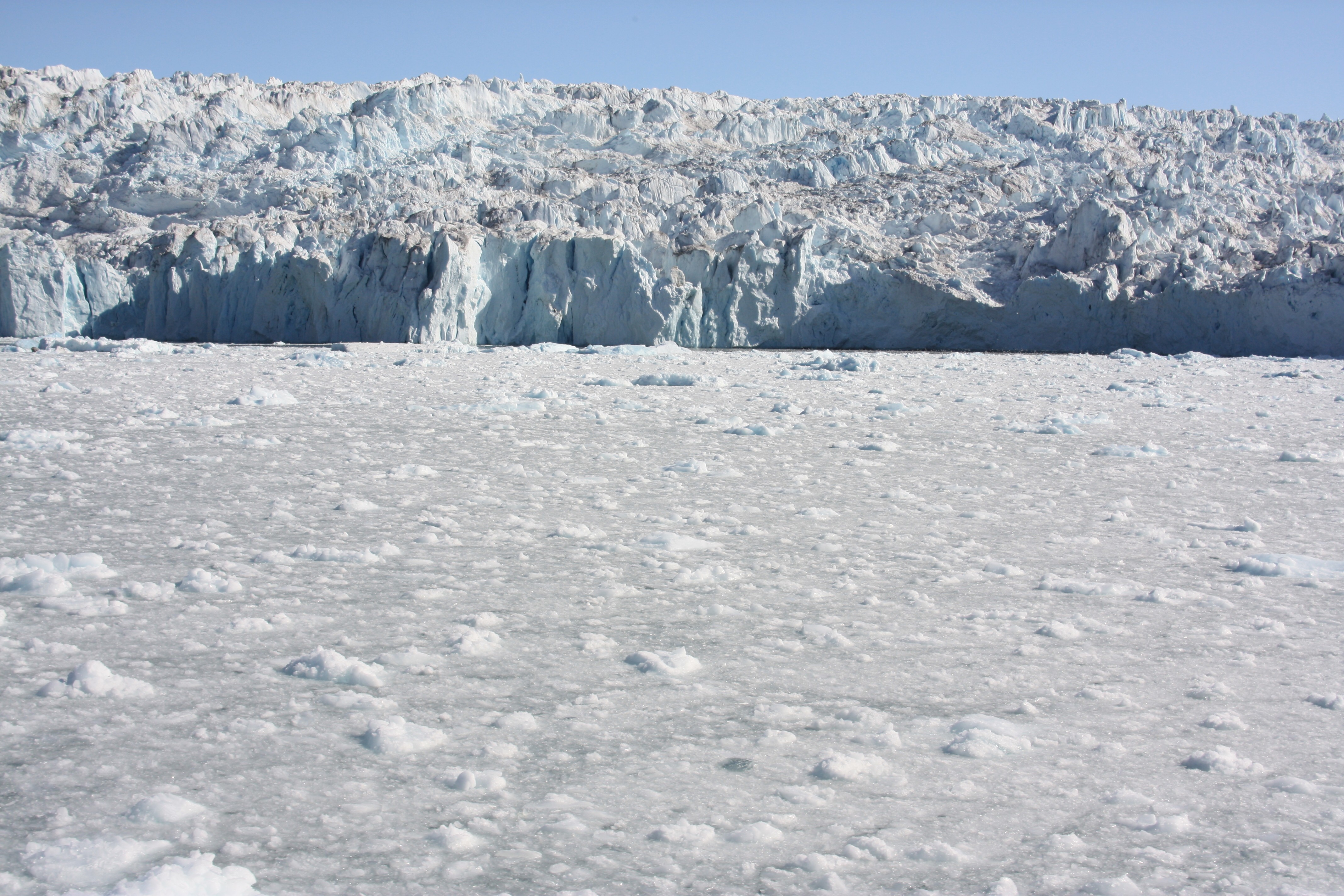
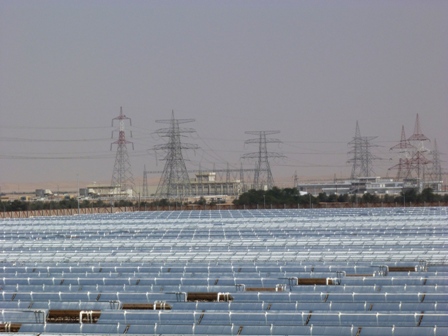
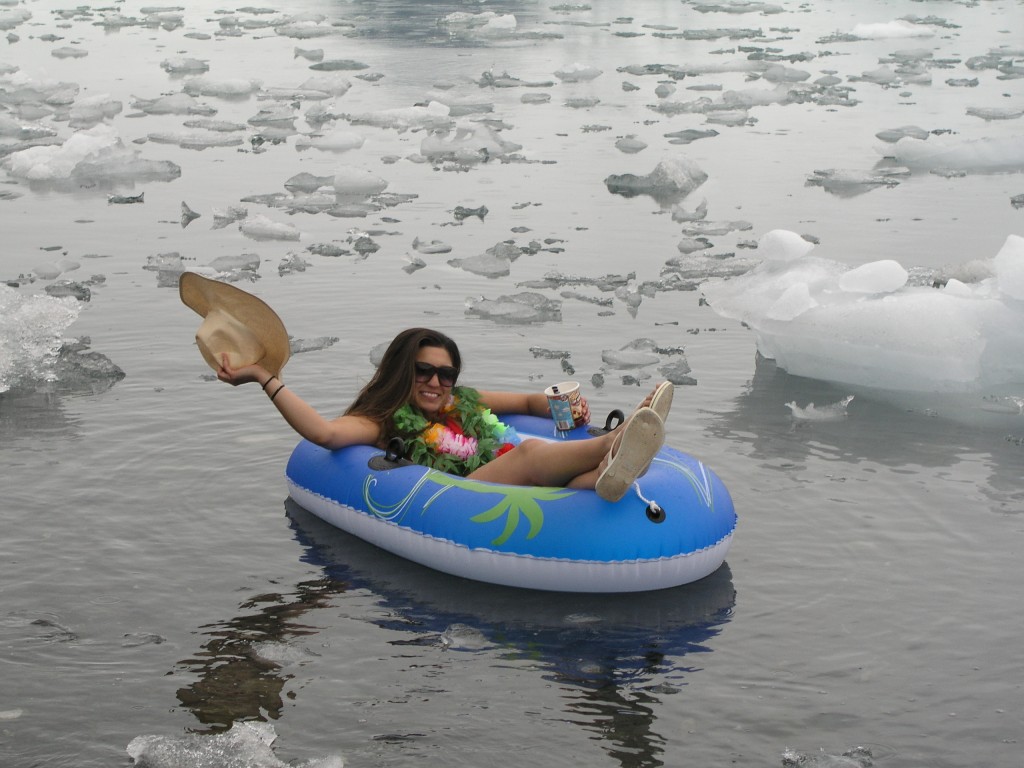
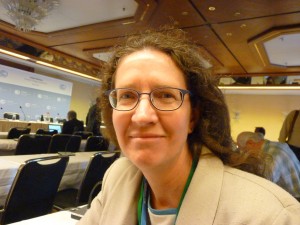
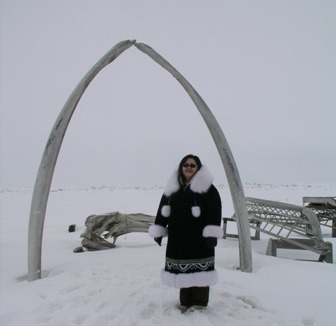
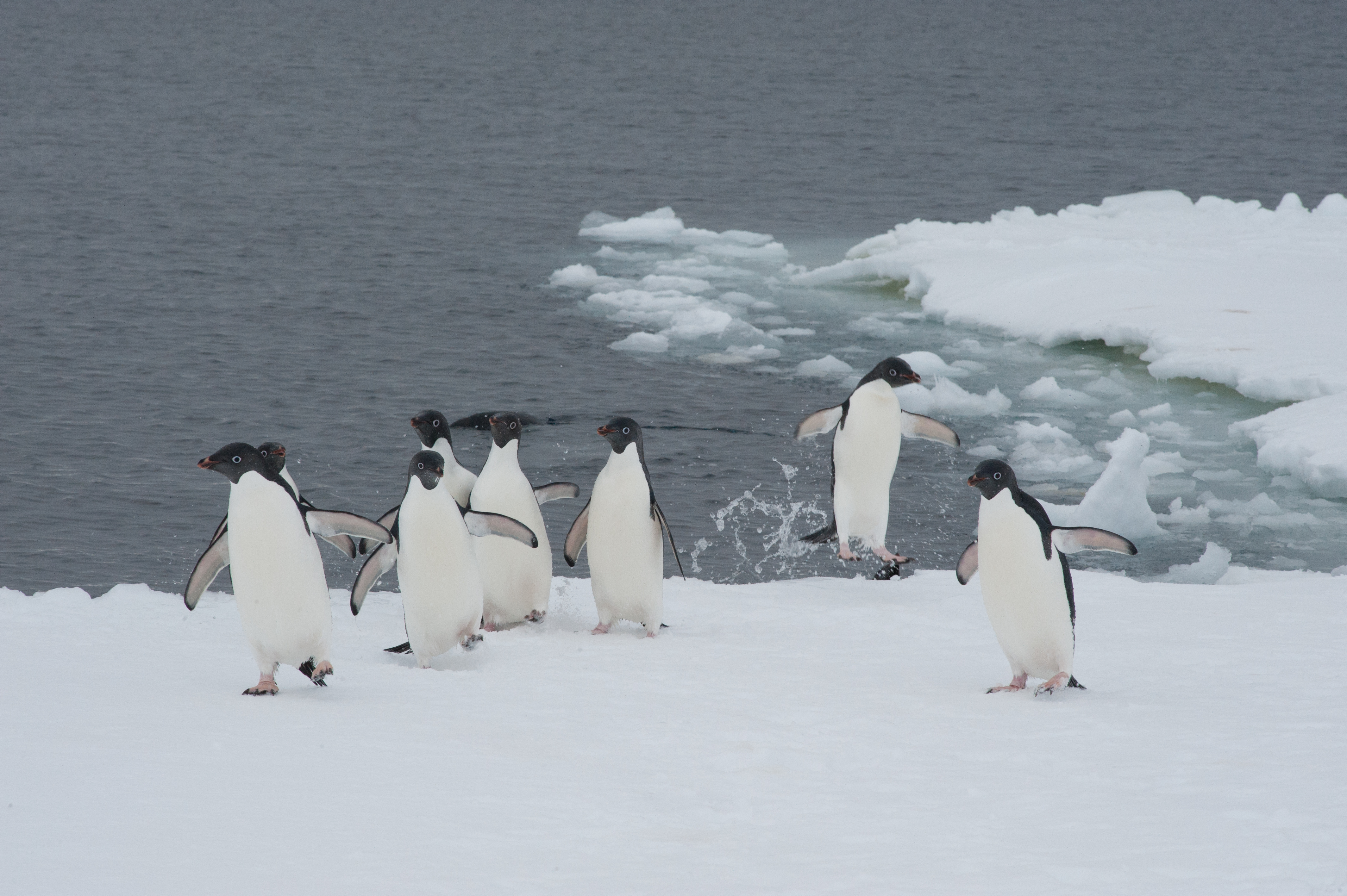

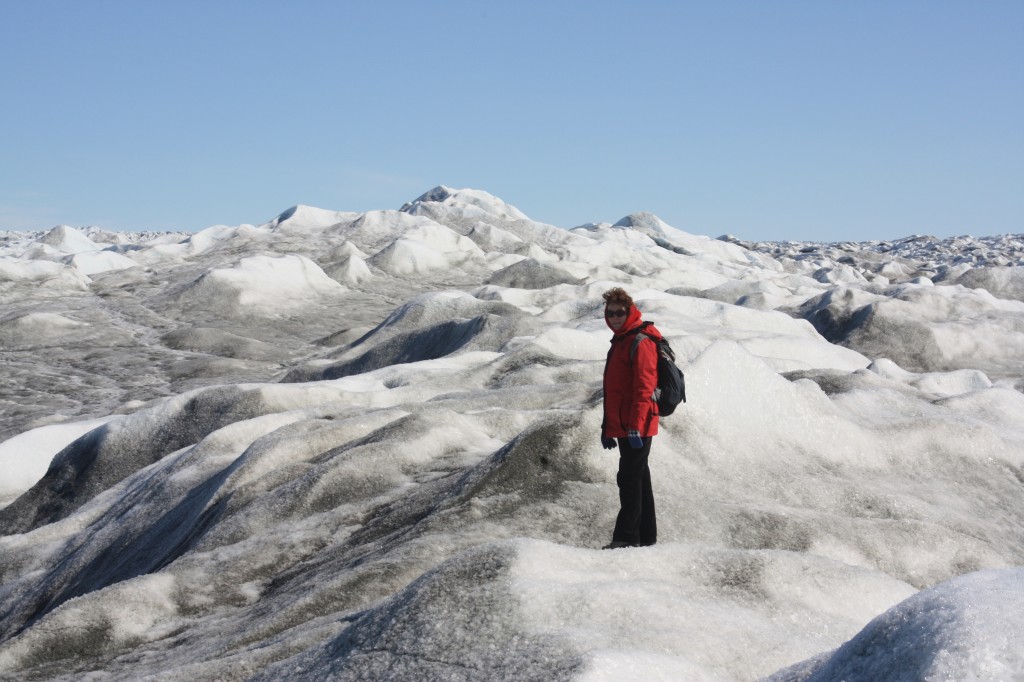

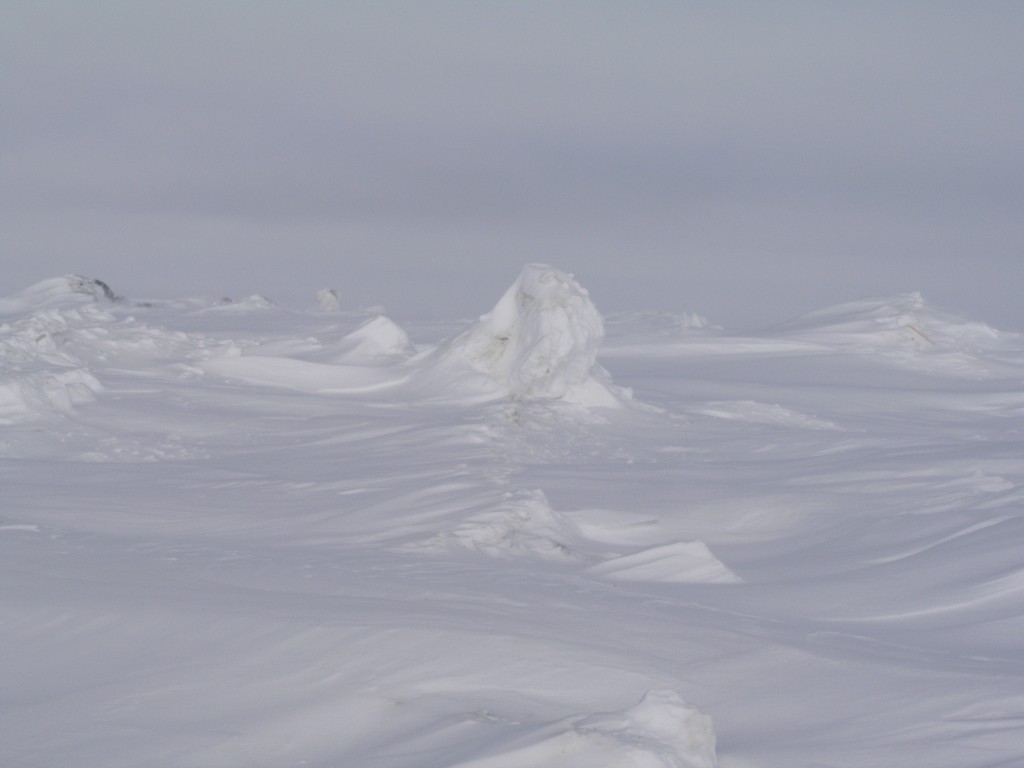
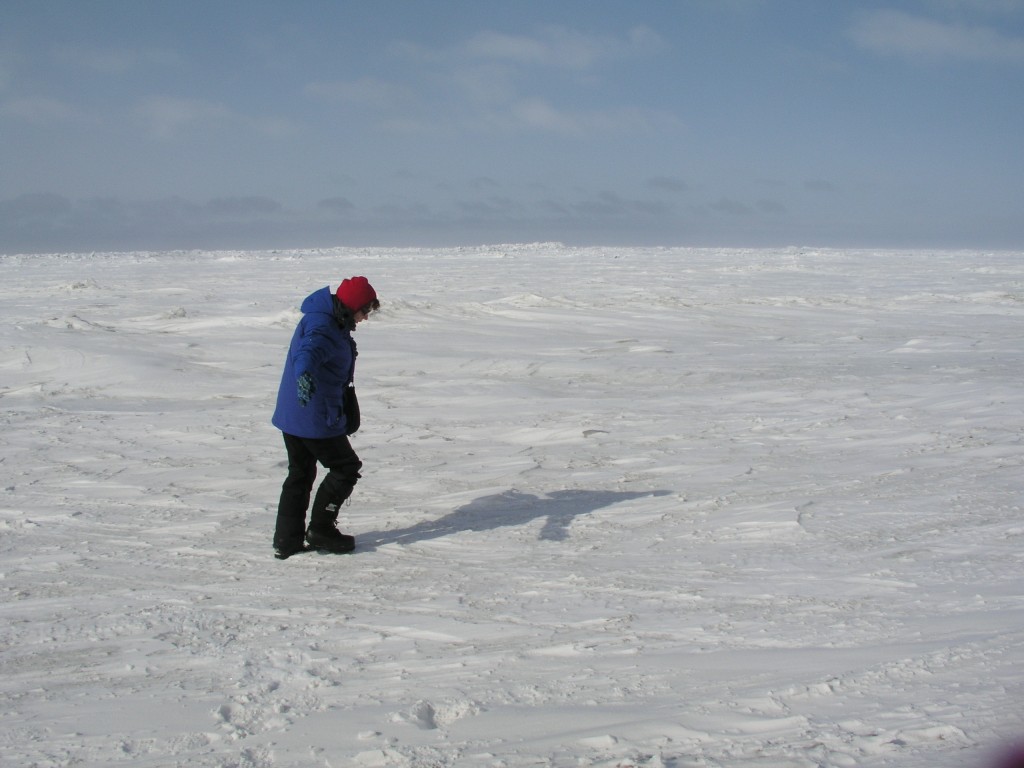

















Feedback